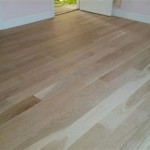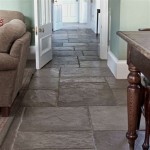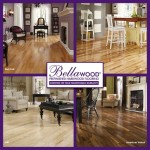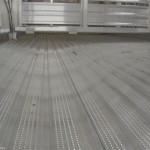Vinyl Sheet Flooring: The Enduring Appeal of Stone Patterns
Vinyl sheet flooring has emerged as a versatile and cost-effective alternative to traditional stone flooring options. Its ability to mimic the aesthetic appeal of natural stone, coupled with its practical advantages, has made it a popular choice for residential and commercial spaces alike. This article delves into the aspects of vinyl sheet flooring with stone patterns, examining its benefits, design considerations, installation, maintenance, and comparing it to other flooring materials.
Stone-patterned vinyl sheet flooring offers a wide array of design possibilities. Manufacturers utilize advanced printing technologies to create highly realistic representations of various stone types, including granite, marble, slate, travertine, and limestone. The texture and color variations inherent in natural stone are replicated with remarkable accuracy, providing a visually compelling surface that enhances the overall ambiance of a room. Furthermore, vinyl sheet flooring is available in a diverse range of patterns, from classic and understated designs to more contemporary and bolder statements.
Advantages of Stone-Patterned Vinyl Sheet Flooring
The popularity of stone-patterned vinyl sheet flooring stems from a confluence of advantages that address the needs and concerns of homeowners and commercial property managers. These advantages relate to cost-effectiveness, durability, ease of maintenance, and comfort.
One of the most significant advantages is its cost-effectiveness. Compared to installing genuine stone flooring, vinyl sheet flooring offers a substantially more affordable option. The material cost itself is lower, and the installation process is typically less labor-intensive, resulting in further savings. The reduction in material waste due to the sheet format also contributes to cost savings.
Durability is another key factor. Vinyl sheet flooring is engineered to withstand daily wear and tear. Its layered construction, often incorporating a wear layer with enhanced resistance to scratches, stains, and indentations, ensures long-lasting performance. This makes it suitable for high-traffic areas, such as kitchens, bathrooms, hallways, and entryways. Unlike natural stone, which can be porous and susceptible to staining, vinyl sheet flooring provides a durable and resilient surface.
Maintenance is greatly simplified with vinyl sheet flooring. Its smooth, non-porous surface resists the absorption of liquids and spills, making it easy to clean with minimal effort. Regular sweeping or vacuuming, along with occasional damp mopping, is generally sufficient to maintain its appearance. The absence of grout lines, a common feature in tile flooring, eliminates the need for scrubbing and cleaning grout, further reducing maintenance requirements.
Comfort underfoot is another notable benefit. Compared to the hardness of natural stone, vinyl sheet flooring offers a softer and more comfortable surface to walk on. The cushioned backing provides a degree of shock absorption, reducing fatigue and making it more comfortable for standing for extended periods. This is particularly advantageous in kitchens and other areas where people spend a significant amount of time on their feet. Its thermal properties also contribute to a more comfortable environment, as it tends to be warmer to the touch than stone, especially in colder climates.
Design Considerations for Stone-Patterned Vinyl Sheet Flooring
Choosing the right stone pattern and color for vinyl sheet flooring requires careful consideration of the overall design scheme and intended use of the space. Factors such as room size, lighting, and existing décor should be taken into account to create a cohesive and aesthetically pleasing environment.
In smaller rooms, opting for lighter-colored stone patterns can help to create the illusion of spaciousness. Light hues reflect light and make the room feel brighter and more open. Conversely, darker stone patterns can add warmth and depth to larger rooms. The choice of pattern should also complement the existing color palette of the room. Coordinating with wall colors, furniture, and accessories is essential for creating a harmonious design.
Lighting plays a crucial role in how the stone pattern appears. Natural light will enhance the texture and color variations of the vinyl sheet flooring, while artificial light can alter its appearance. It is important to consider the type and intensity of lighting in the room when selecting a stone pattern. Testing samples of the flooring under different lighting conditions can help to ensure that the chosen pattern complements the overall ambiance of the space.
The intended use of the room should also influence the choice of stone pattern. For high-traffic areas, selecting a pattern with subtle variations and a textured surface can help to camouflage scratches and wear. In bathrooms and kitchens, opting for water-resistant or waterproof vinyl sheet flooring is essential to prevent moisture damage. Consider the overall style of the room when selecting a pattern. Classic stone patterns, such as marble or travertine, can complement traditional décor, while more contemporary patterns, such as slate or concrete, can enhance modern designs.
Installation and Maintenance of Stone-Patterned Vinyl Sheet Flooring
Proper installation and maintenance are critical for ensuring the longevity and performance of stone-patterned vinyl sheet flooring. Following the manufacturer's instructions and employing appropriate techniques are essential for achieving a professional and long-lasting result.
Surface preparation is paramount for a successful installation. The subfloor must be clean, level, and dry. Any imperfections or irregularities should be addressed before laying the vinyl sheet flooring. This may involve filling cracks, sanding uneven surfaces, or applying a leveling compound. A smooth and stable subfloor provides a solid foundation for the vinyl sheet flooring, preventing bubbling, warping, or premature wear.
The installation process typically involves cutting the vinyl sheet flooring to size and adhering it to the subfloor using a suitable adhesive. The adhesive should be compatible with both the vinyl sheet flooring and the subfloor. Applying the adhesive evenly and following the manufacturer's recommendations is crucial for ensuring a secure bond. Rolling the vinyl sheet flooring with a heavy roller after installation helps to remove air pockets and ensure proper adhesion.
Maintenance is straightforward, but regular cleaning is essential for preserving the appearance of the flooring. Sweeping or vacuuming regularly removes dirt and debris that can scratch the surface. Damp mopping with a mild detergent solution is sufficient for cleaning most spills and stains. Avoid using abrasive cleaners or harsh chemicals, as they can damage the wear layer of the vinyl sheet flooring. Promptly wiping up spills prevents staining and helps to maintain the flooring's pristine appearance. Using floor protectors under furniture legs prevents scratches and indentations. Regular maintenance will help to extend the lifespan of the vinyl sheet flooring and maintain its aesthetic appeal.
One-piece installation contributes to the hygienic nature of vinyl sheet flooring. The absence of seams or grout lines minimizes the potential for dirt and bacteria accumulation, making it a particularly suitable choice for kitchens, bathrooms, and healthcare facilities. The impermeability of the surface further enhances its resistance to moisture and microbial growth.
The resilience of vinyl sheet flooring also offers acoustic benefits. It helps to dampen sound transmission, contributing to a quieter and more peaceful environment. This is particularly advantageous in multi-story buildings or apartments where noise reduction is desirable.
Vinyl sheet flooring often incorporates a printed layer protected by a clear wear layer. The thickness and composition of the wear layer determine the flooring's resistance to scratches, stains, and wear. Higher-quality vinyl sheet flooring typically features thicker wear layers, offering superior durability and longevity.
Different grades of vinyl sheet flooring are available to suit varying needs and budgets. Residential-grade options are suitable for light to moderate traffic areas, while commercial-grade options are designed to withstand heavy foot traffic and demanding conditions. Selecting the appropriate grade of vinyl sheet flooring is essential for ensuring its long-term performance and satisfaction.
Sustainability considerations are also relevant when choosing vinyl sheet flooring. Some manufacturers offer eco-friendly options made from recycled content or manufactured using sustainable practices. Choosing these options can help to reduce the environmental impact of the flooring installation.
Comparison with Alternative Flooring Materials
When considering stone-patterned vinyl sheet flooring, it is helpful to compare it with other flooring materials, such as natural stone, ceramic tile, and laminate flooring. Each material offers distinct advantages and disadvantages in terms of cost, durability, maintenance, and aesthetics.
Natural stone, while offering unparalleled aesthetic appeal and durability, is significantly more expensive than vinyl sheet flooring. Installation is labor-intensive and requires specialized skills. Maintenance can also be more demanding, as stone requires sealing and periodic cleaning with specialized products. Vinyl sheet flooring offers a cost-effective alternative that replicates the look of natural stone with easier installation and maintenance.
Ceramic tile is another popular flooring option, known for its durability and water resistance. However, tile is harder and colder underfoot than vinyl sheet flooring. Installation can be more complex and time-consuming, involving grouting and sealing. While tile offers a wide range of design options, vinyl sheet flooring provides a more affordable and comfortable alternative with easier installation and maintenance, along with realistic stone patterns.
Laminate flooring offers a similar cost advantage to vinyl sheet flooring and is relatively easy to install. However, laminate is generally less water-resistant than vinyl sheet flooring and is more susceptible to damage from moisture. Vinyl sheet flooring provides a more durable and water-resistant option, making it a better choice for kitchens and bathrooms.

Vinyl Stone Flooring Guide Lx Hausys

Stone Look Vinyl Sheet Flooring At Com

Stone Vinyl Flooring In Houston Vbaf

Trafficmaster Sandstone Mosaic Stone Residential Vinyl Sheet Flooring 12 Ft Wide X Cut To Length U4290 284c936g144 The Home Depot

Armstrong Cushionstep Better Armb3392401 Slate Gray Vinyl Sheet 12 W

Trafficmaster Sandstone Mosaic Stone Residential Vinyl Sheet Flooring 12 Ft Wide X Cut To Length U4290 284c936g144 The Home Depot

1970s Flooring Two Flashback Style Sheet Vinyl Designs Retro Renovation

Tarkett Brown Blue 5 Mil X 12 Ft W Water Resistant Cut To Length Vinyl Sheet Flooring At Com

Stone Look Vinyl Sheet Flooring At Com

Types Of Sheet Vinyl Flooring Victoria Bc Edgar Miner
Related Posts








